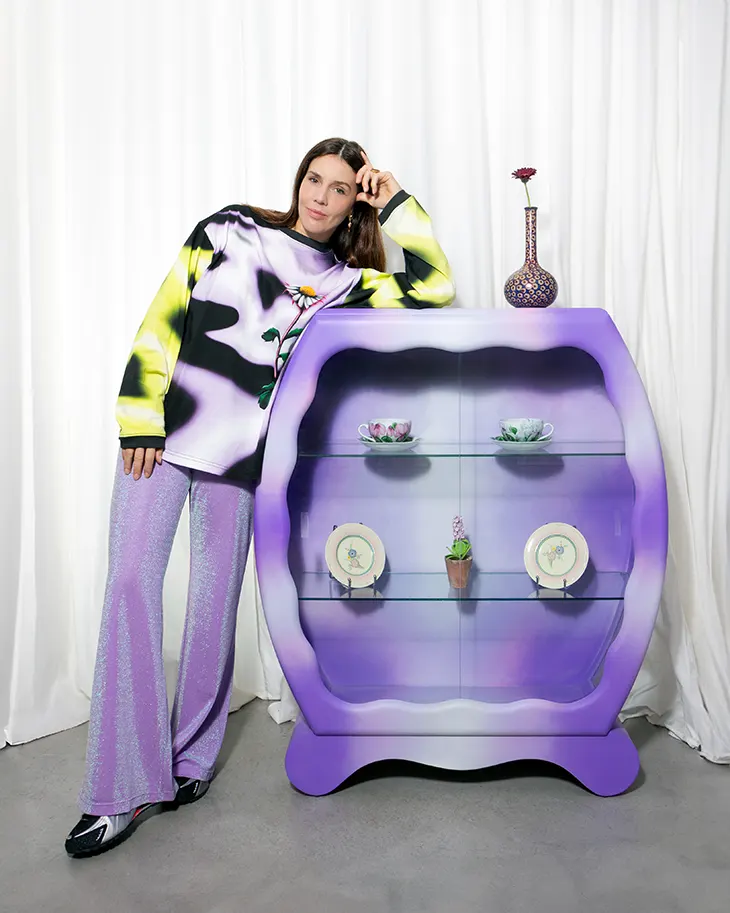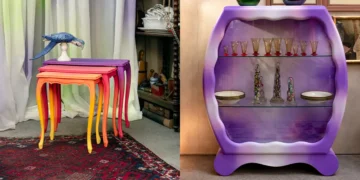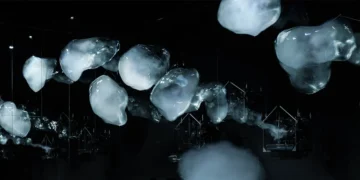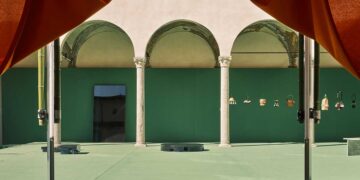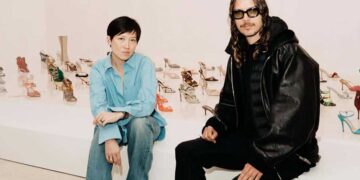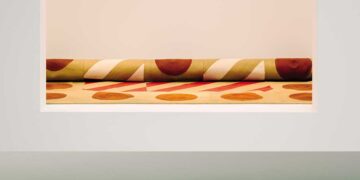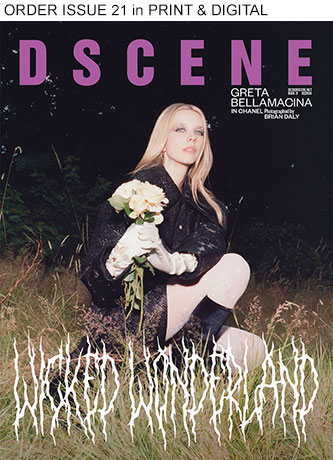
During Milan Design Week 2025, Maccapani introduces MaccaFinds: Airbrushed, a furniture project that transforms vintage pieces using the bold visual language of airbrushing. The collection features twelve objects, each carefully selected and updated in collaboration with a Varese-based artist known for customizing motorbikes and helmets.
DESIGN
This marks the first time Maccapani extends its creative direction to furniture. The idea grew out of Macca Space, the brand’s site at Via Bergamo 22 in Milan, where founder Margherita Maccapani Missoni shaped a physical environment aligned with the label’s broader identity. What began with clothing and styling now expands to interiors, bringing forward the same curatorial impulse that informs the brand’s fashion work.

Maccapani uses MaccaFinds as a platform to revisit objects from the past. This latest iteration introduces furniture into the fold, continuing the brand’s ongoing process of selection, restoration, and surface transformation.
The twelve objects featured in the Airbrushed collection include a dresser, a glass cabinet, three coffee tables, three stools, and two metal lamps. Each piece carries traces of past use and personal history. Some came from antique markets, others from Margherita’s own home.
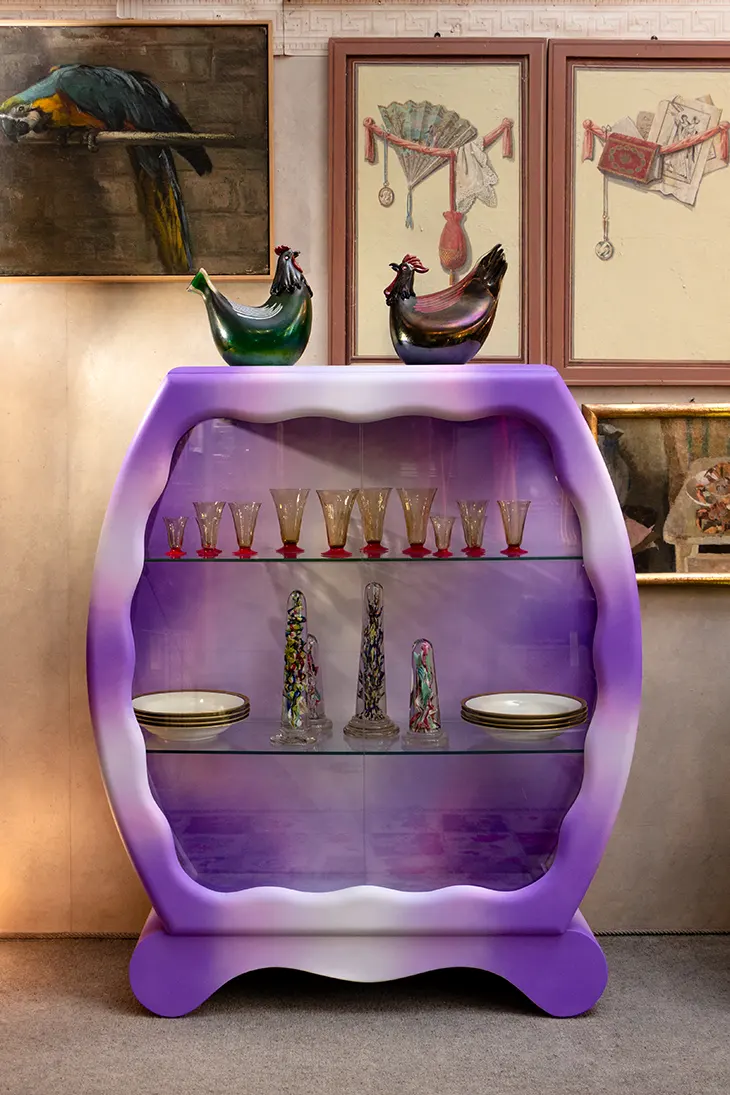

The artist tasked with customizing these items drew from a visual language steeped in motorsport culture, specifically motocross and enduro. That connection isn’t incidental. Margherita’s upbringing in Varese included close ties to this world, which also influenced key fashion pieces in Maccapani’s collections, such as the Moto T shirt.
Airbrushing turns each piece into a unique composition. It adds speed, saturation, and edge to furniture that once served a very different purpose. What results is an unexpected exchange between two reference points: antique furniture and custom vehicle art.
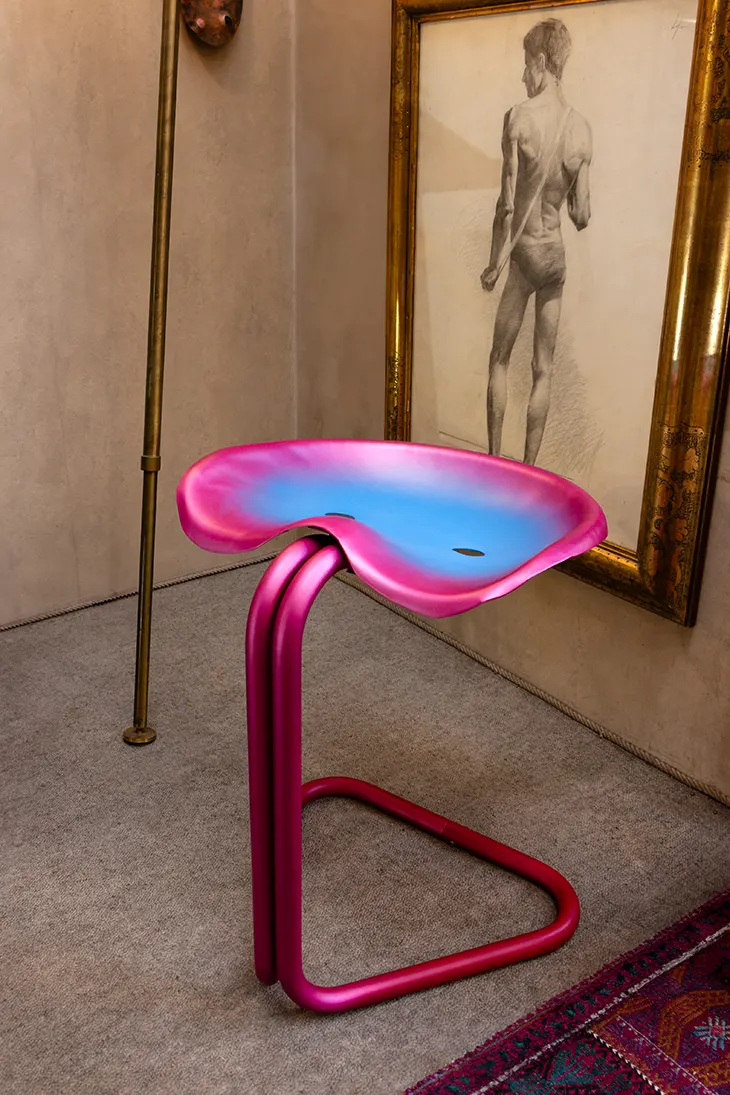
This tension between eras fits naturally into Maccapani’s wider design language, where surface becomes a space for experimentation. The project doesn’t aim to erase the original form. Instead, it uses color and gesture to shift the viewer’s understanding of what furniture can express.
The collection is on view at Maddalena Tabasso Antichità, a historic antique store on Via Aurelio Saffi 7. The setting reflects the project’s central theme, placing altered objects within a space filled with original antiques. The surrounding furniture and architectural features provide a point of contrast that reinforces the conceptual intent behind Airbrushed.
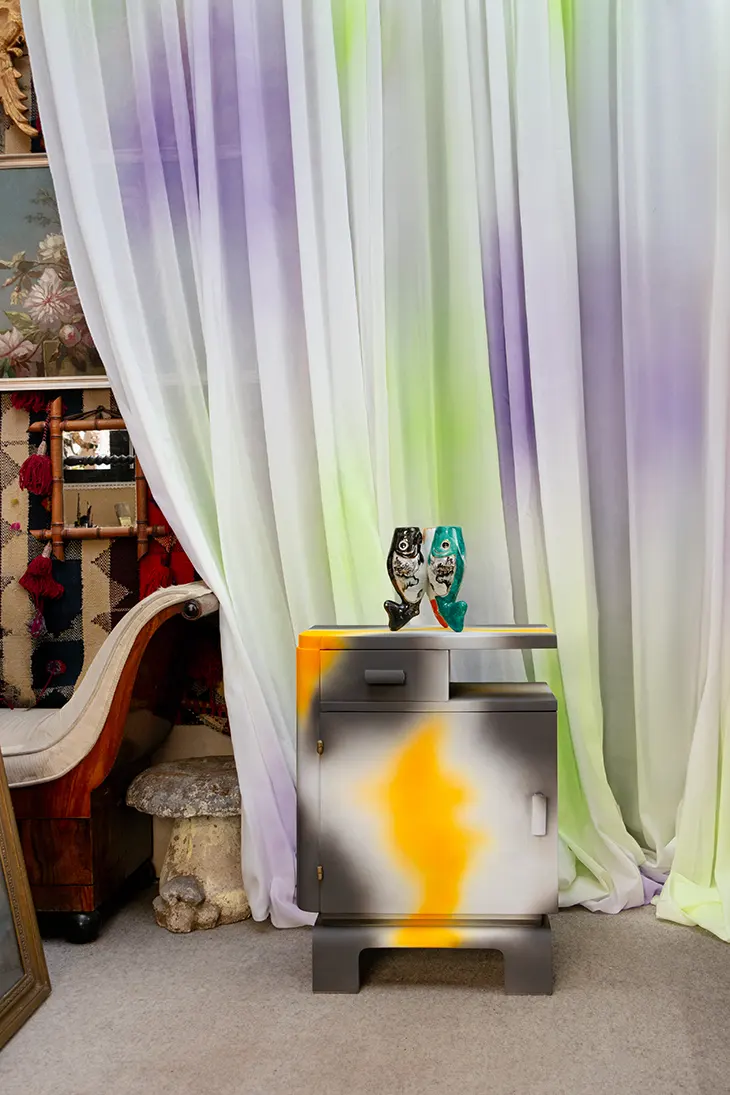

By choosing an established antique dealer rather than a white-cube gallery or concept store, Maccapani grounds the project in a tangible context. The works don’t float in a curated vacuum. They share space with artifacts that have not been touched, prompting direct comparisons between past and present conditions.
Maccapani continues to align its design efforts with a sustainability-first approach. Instead of manufacturing new products, the brand focuses on recovering existing objects and giving them a second life. In this project, reuse operates as both process and principle.
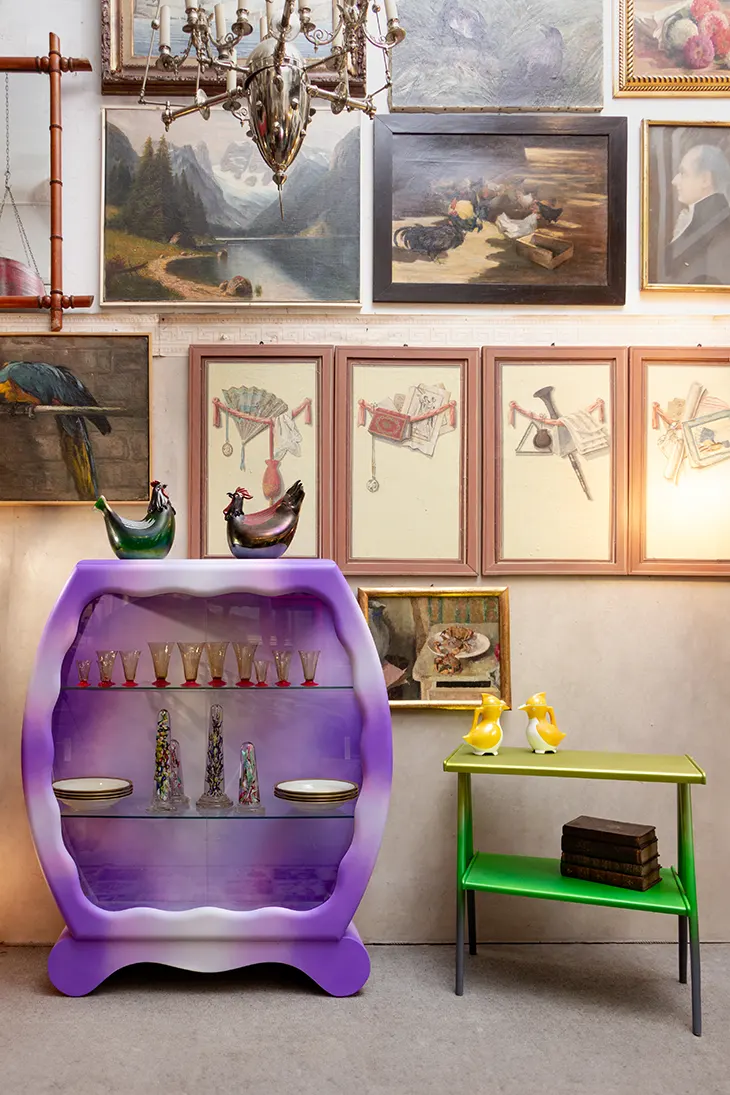
This approach reflects values that have defined the fashion side of the brand since its start. Upcycling plays a central role in Maccapani’s seasonal collections, and Airbrushed adapts that same sensibility to a new category. While the canvas has changed, from fabric to furniture, the design priorities remain consistent.
Customization, bold surface treatments, and material reuse serve as through-lines across all parts of the brand. These methods allow each object, whether wearable or functional, to express its history while participating in contemporary design culture.
